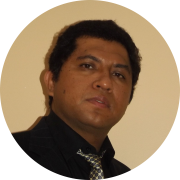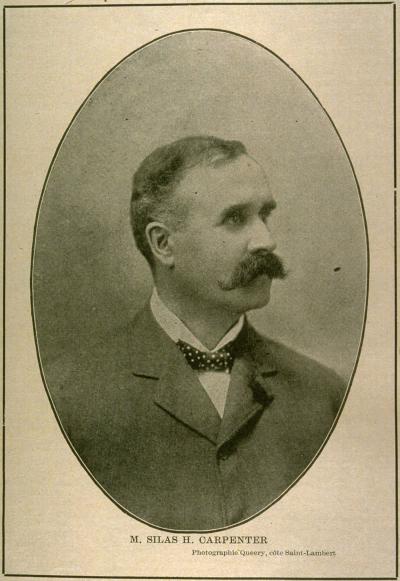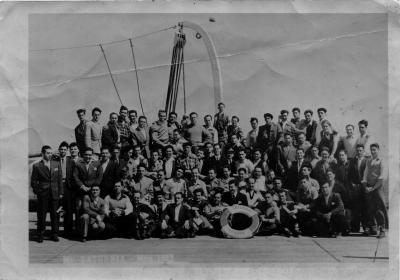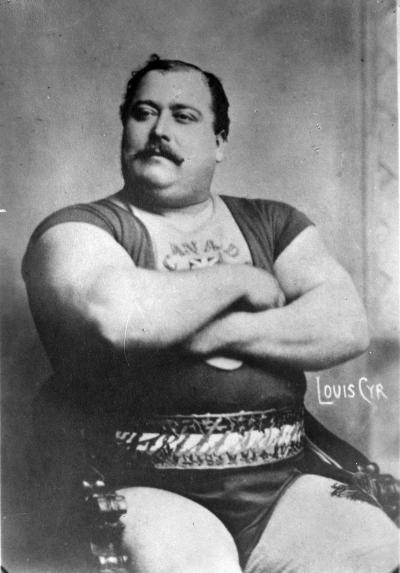Manuelita Del Vayo is believed to have been the very first Colombian immigrant to settle in Montréal. Since the 1930s, many others have followed in her footsteps.
The Colombian community in Montréal started to form in the 1950s. Yet archival evidence shows the life of a pioneer who settled in the city decades earlier. Could she have been the only Colombian Montrealer at the time?
The first Colombian in Montréal
Fête nationale Colombie 1954
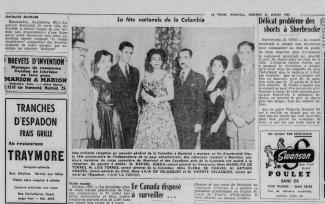
Archival documents demonstrate that the first person of Colombian origin to settle in Montréal was Manuelita Del Vayo, a woman from Barranquilla, who arrived in the early 1930s. In the private correspondence of the Consulate of Colombia in Montréal, conserved by the national archives of Colombia, a letter dated February 25, 1957 notes that Mrs. Del Vayo “has resided in Montréal for twenty-five years.” In this same letter, we learn that Manuelita Del Vayo was a journalist for the Canadian Broadcasting Corporation, and the consulate confirms that she was known in the Canadian city’s “intellectual and social circles.” A delegate’s son and acquaintance of Del Vayo living in Montréal in the early 1960s mentions that Del Vayo came to Montréal because she met an English petroleum engineer who was working for a US company in Colombia in the late 1920s.
The foundations of a community
Within the consular correspondence, four pieces of information document the Montréal Colombian community’s early beginnings. The first concerns a request for the consulate to register the birth of a child—a baby who may very well have been the first born to a Colombian family in Montréal. This child was Juan David Daza, born on January 8, 1952. His father was an engineer named David Daza. Another letter contains information about what may be the first marriage between a Colombian man and a Québécoise woman. In it are details about Victor Franco, who visited the consulate in October 1952 to enquire about travel documentation requirements for a trip to Colombia with his Canadian wife and Montréal-born child.
The consular correspondence also shows a record of a person who might have been the first Colombian-born person to die in Montréal; Ligia Montoya de La Torre, from Antioquia, passed on May 24, 1953. She had five children at the time, aged eight months to eight years. The letter also states that Mrs. Montoya’s last three children were born in Canada and that her husband’s name was Jairo Latorre. Mrs. Montoya de La Torre had moved to Montréal in June 1949. Her passport was “ordinary” status and had been sent to Medellín on May 24, 1949. Her husband and children likely returned to Colombia, since Latorre was requesting the consulate’s permission to travel to Colombia alone with his five children.
The fourth piece of information concerns the Colombian community in the late 1950s and gives a clue as to the kind of newcomers integrating into Québec society at the time. In a letter sent to Colombia’s Ministry of Foreign Affairs on December 22, 1948, the consulate notes that most Colombians living in Montréal were “students, people passing through, and businessmen.” Looking closer, we can see that among the first Colombian Montrealers were people looking for adventure, as well as domestic workers and labourers. Others were affluent Colombians, seeking to settle somewhere other than Europe or the United States. Many of the newcomers looking for a new adventure arrived from south of the Canadian border, in particular New York.
A student population and a burgeoning community
Ligia Legault et Bertha Wilches
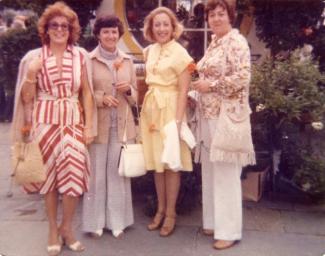
In the letter of January 14, 1957, the consulate informed the Colombian government that twenty-five Colombians had registered at his office the year before. Among them, fifteen were students: eight were studying theology in Montréal seminaries, two were university students, and five were high school students, including one at Loyola College. Following their studies, some of these students decided to settle in the city for good. Among them was Bertha Wilches Teran, who had emigrated in early 1950 to carry out her studies.
The influx of Colombian immigrants which began in the 1950s continues today, as part of four major waves of Latin American migration north.
CHARBONNEAU, Denis. L’immigration argentine et péruvienne à Montréal : ressemblances et divergences, de 1960 à nos jours, Mémoire (M.A.), Université du Québec à Montréal, 2011.
CONSULAT COLOMBIEN À MONTRÉAL. Correspondance consulaire du Consulat colombien à Montréal, années : 1952, folio 103; 1953, folios 114 et 158; 1954, folio 14; 1957, folios 25 et 96, Archive historique nationale de la Colombie.
DOLIN, Benjamin, et Margaret YOUNG. Le programme canadien d’immigration, [En ligne], Division du droit et du gouvernement, 1989 (révisé en 2002).
http://publications.gc.ca/Collection-R/LoPBdP/BP/bp190-f.htm#
GOSSELIN, Jean-Pierre. « Une immigration de la onzième heure : les Latino-Américains », Recherches sociographiques, vol. 23, n° 3, 1984, p. 393-420.
HUMANEZ-BLANQUICCET, Enoïn. L’immigration colombienne au Québec depuis 1950 : regard historique sur ses causes, Mémoire (M.A. histoire), Université du Québec à Montréal, 2012.
MATA, Fernando G. « Latin American Immigration to Canada: Sorne Reflections on the Immigration Statistics », Canadian Journal of Latin-American and Caribbean studies, n° 20, 1985, p. 27-42.
WHITAKER, Reginald. La politique canadienne d’immigration depuis la Confédération, Société historique du Canada, Ottawa, 1991.
